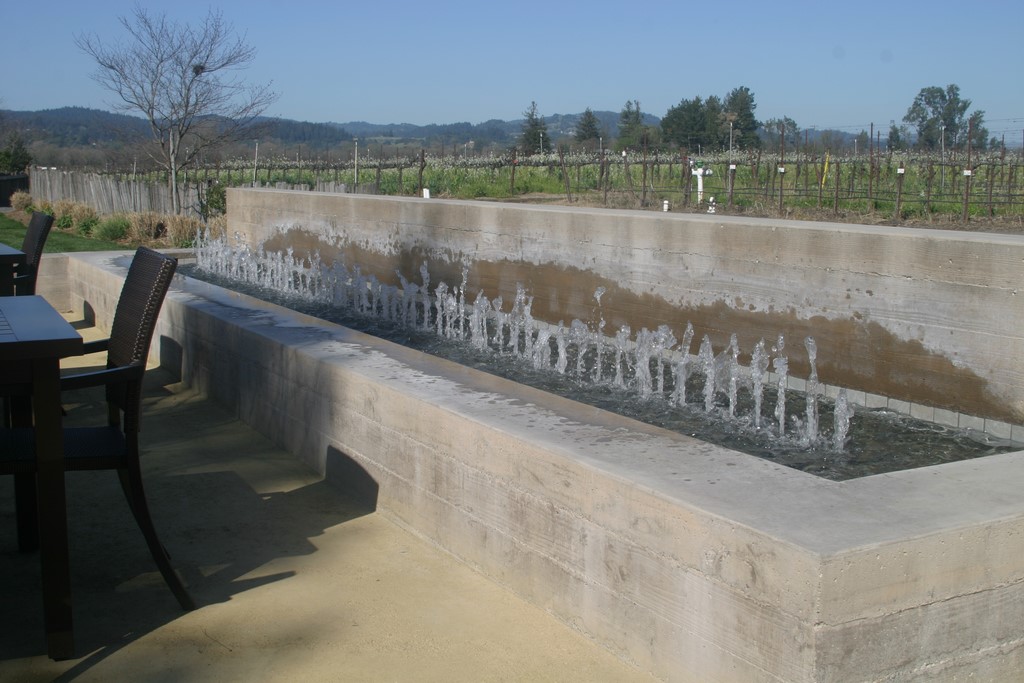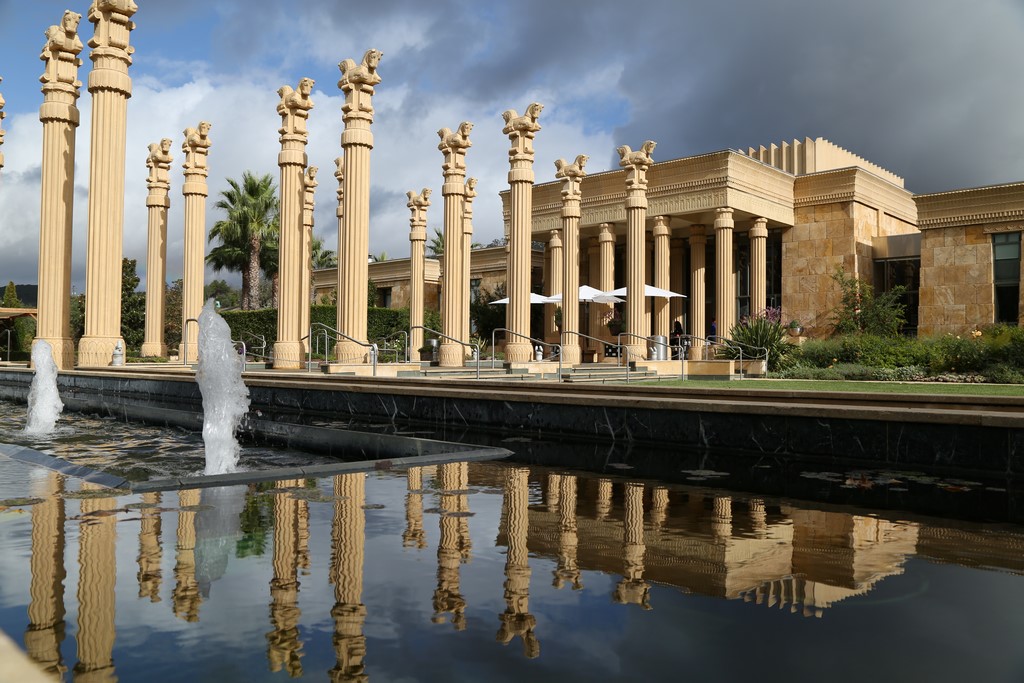Trust in Balance

No matter where you turn these days, you’ll find watershaping experts preaching the gospel of balanced hydraulics. In class after class, text after text, they all say that if you do exactly the same thing on one side of a tee as you do on the other, you will get the same flow on both side of that tee.
If, for example, two main drains are connected to a single tee with pipes of the same length and diameter and the same fittings, those drains will both draw equal amounts of water. It all seems so simple and direct
In fountain work specifically, I can think of no concept that is more important to making systems work than that of balanced hydraulics. It’s important in developing the most basic waterfeatures – and it’s absolutely crucial in the design and construction of multiple-head fountains.
Trouble is, much of the work we do is encased in concrete, so as human beings we have a tendency to hedge our bets – which in my own experience has led to some interesting issues on real-world job sites. Let’s look at three projects that demonstrate what I mean.
Darioush
Napa, Calif.
If you travel the Silverado Trail just north of Napa, before long you’ll come across Darioush. Great wines are made here, and the owner’s Persian ancestry is reflected in the architecture and landscaping of the entire facility.
I was brought in to install the plumbing and equipment for the estate’s twin fountains, each consisting of one rectangle set inside another. The inner rectangles feature five cascade heads, contrasting with the comparative stillness of the water in the surrounding rectangles. The inner structures are chlorinated to keep their water clear and clean; the outer structures contain biological systems alive with koi and aquatic plants.
| The fountains and ponds at Darioush combine with the architecture to make a robust opening statement to anyone who visits the facility for an event, a meal or a wine tasting. A balanced hydraulic system sees to it that the twin fountains operate with consistent symmetry on both sides of the entrance. |
The fountains and the ponds operate via two distinct water systems, each with a pump, filter and various other components. The angled walls of the fountains are set up in such a way, however, that it appears that the central features flow into the koi ponds – but that doesn’t happen. (The only such “connections” are between the twinned fountains and the twinned ponds: We included equalizing lines to ensure that the same water levels are maintained across the gap between the waterfeatures.)
Balanced hydraulics was used to feed the fountains heads from both ends of each manifold. In turn, those manifolds, which pass under a 20-foot-wide walkway between the waterfeatures, are teed together and run to the equipment in such fashion that both sides are completely symmetrical in every way. The result is that all ten fountain jets shoot water to the exact same height – just as proponents of balanced hydraulics would expect.
Private Residence
Sonoma, Calif.
When a system is simple – as in the case above where the desire is to have an array of jets shoot water to the same height – it’s easy to trust in hydraulic balance and move forward without hesitation. But let’s look at another project where the client’s desire made things more interesting.
Here, the homeowner wanted to enhance the space with a fountain – but he wanted the system to be flexible enough in operation that he could use it in a variety of ways to change the sounds, alter the appearance and, basically, set different moods.
He didn’t want the hassle of getting too deeply involved with how anything worked, but he did want to be able to adjust the heights of the fountain flow to control the environment by flipping switches on the patio rather than going behind a wall to visit the equipment pad. This meant that I had to figure out a way to select and install components that would let him manage the effect without turning any valves.
| This is a relatively simple fountain, but the homeowner’s desire for control and the unusual way he wanted us to give it to him made everything a bit more complicated. By doubling up on the pumps and installing valves he may never use, we were able to keep the system balanced while maximizing its flexibility. |
The solution here involved using two pumps: With Pump One on by itself, the water shoots up six inches. With Pump Two on alone, the water reaches a height of 12 inches. With both pumps on, the height climbs to nearly 22 inches. Both pumps feed the same fountain manifold, and all of the plumbing is carefully balanced on both sides. The result is that the heights the jets reach is consistent all the way down the line.
But I wanted the homeowner to have even greater flexibility, so I valved each of the jets. With all of the valves wide open, the eight jets reach the same height; using the valves, however, the flow can be adjusted to produce different profiles – saw-toothed, arching and more. He might not want to turn those valves, but at the very least I wanted to give him the capability of doing so.
Rodney Strong Vineyards
Windsor, Calif.
I’ve been in the fountain business for a long time, and I know the agony of starting a fountain for the very first time and, with the client present, seeing that it isn’t working quite the way everyone anticipated it would.
This experience – a cruel teacher – has even led me at times to falter in my faith in balanced hydraulics and develop systems to compensate for a possible failure in basic physics. That sounds silly, but the prospect of breaking out tons of concrete to resolve a failure in balance can sometimes make people like me do unusual things.
Take the dining-patio fountain at Rodney Strong Vineyards as an example: I’ve never had any trouble believing in hydraulic balance with five or ten fountain heads, but in this case I was setting up a line of 56 fountain heads, each of which was to shoot to the same height in perpetuity.
In theory, I thought it would work. But as I looked at the 56 heads stretching out across a 28-foot-long manifold, I began to have doubts: What would I do if, for some unanticipated reason, flow to the central jets somehow turned out to be more or less than at the ends, nearer the pressure sources.


| This is a case where I just couldn’t bring myself to trust entirely to balance as a governing principle of fountain design. The 56 small valves I added weren’t actually needed, but I have to say it eased my mind to know they were there should physics have failed me in any significant way. |
Frozen by that thought, I went out and bought 56 small valves and put one on each of the risers leading up to the system’s precision jets. After all that work, imagine how I felt when we initiated the system: With all 56 of those little valves wide open, the water climbed to the exact same height above each one.
Yes, I regretted my lack of faith in balanced hydraulics that day. But I also learned a lesson in personal balance: What I’d done hadn’t proved to be necessary, but I had an overriding concern about system performance that set me off and overcame my usual understanding of the rules.
After this experience, am I ever likely to doubt hydraulic balance again? Not for love or money. But given a similar situation, can I guarantee that I won’t break down and install valves yet again? I’d like to say no to that one, too.
To see a brief video of the patio fountain at Rodney Strong Vineyards, click here.
Jim Wilder is founder and owner of Living Water Creations, a Santa Rosa, Calif., design and construction firm focused on custom waterfeatures for both residential and commercial clients. He is also founder and owner of Pond & Fountain Pros, a pond and fountain supply firm also based in Santa Rosa. A 1975 graduate with a degree in geophysics from Sonoma State University (Rohnert Park, Calif.),Wilder began his working life in engineering and geophysics before shifting to watershaping on a full-time basis more than 25 years ago. In his spare time, he is an accomplished three-cushion billiards player.















